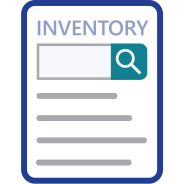
Choose from 5 options:
Extra information to help you categorise the importation and manufacture (introduction) of chemicals for an end use in articles with food contact.
Have you checked if your chemical is on our Inventory? If your chemical is on our Inventory and your introduction meets any terms of the Inventory listing, your introduction is categorised as a ‘listed’ introduction. Read about listed introductions.
Importers and manufacturers (introducers) of industrial chemicals (and products that are designed to release industrial chemicals) that have an end use in articles with food contact. This guidance will help you work out whether your introduction will be an exempted, reported or assessed introduction. You must read this in conjunction with our categorisation guide.
An industrial chemical has an end use in an article with food contact where the chemical becomes part of an article that will come into contact with food, other than:
Note: we define “food” to have the same meaning as in the Food Standards Australia New Zealand Act 1991.
Your chemical does have an end use in an article with food contact, if for example, following its introduction it becomes part of:
Your chemical doesn’t have an end use in an article with food contact, if for example, following its introduction it becomes part of:
Introductions of an industrial chemical for an end use in an article with food contact are referred to as a ‘specified class of introduction’. We have an increased level of concern for specified classes of introductions, due to a greater potential for particular hazards or high levels human or environmental exposure. For this reason, there may be additional or different requirements when working out your category of introduction as well as additional record keeping obligations.
Our increased level of concern for introductions of chemicals for an end use in an article with food contact, is because there is a potential for adverse effects if chemicals that have migrated from the article into food are ingested and absorbed into the body. The additional or different requirements arising from these concerns are outlined below.
You must work out if your introduction meets the criteria for the exempted or reported categories by going through steps 1-6 of our categorisation guide. If your introduction does not meet the criteria for the exempted or reported category, it will be an assessed introduction.
You can find additional or different requirements you need to be aware of when working out your introduction category at:
If the human health exposure band for your introduction is 4, you’ll need additional or different information to show your chemical doesn’t have the following human health hazard characteristics:
The information you need for all other human health hazard characteristics (and introductions in other human health exposure bands) is the same as other chemical introductions.
If the human health categorisation volume for your introduction is >100kg, and your introduction is to be categorised as exempted or reported, you need to show that your chemical doesn’t have this hazard characteristic. To do this, you’ll need the information that is required in Part 6.16.2 of the Categorisation Guidelines.
For example, you could show that your chemical is permitted to be used as a food additive according to Schedule 15 of the Australia New Zealand Food Standards Code - Standard 1.3.1 - Food Additives. The human health exposure expected from the industrial use of your chemical must be no higher than the human health exposure expected from food use.
If your introduction is of a chemical for an end use in an article with food contact, and:
For all other record keeping requirements that apply to your chemical introduction see our guidance on reporting and record keeping obligations.